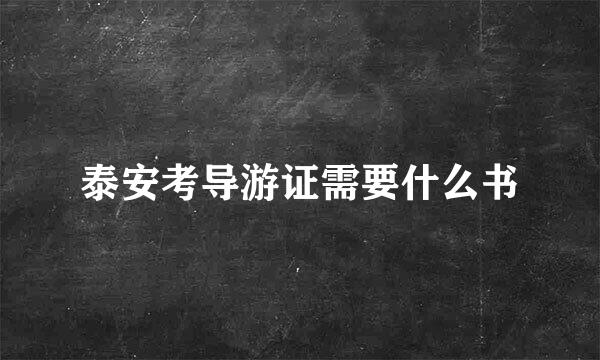
Foguang Temple The Foguang Temple is located on a slope of Mt.Foguang 32 kilometres to the north east of Wutaixian County , amidst a grove of trees. Construction be-gan during the northern Wei dynasty (471-499)m and the most famous of its halls, the Hall of the Great Buddha, is in a style unique to the Tang dynasty. It is the oldest wooden structure now extant. The hall stands on a high platform and consists of seven bays and measures 32 metres in height from the platform surface to the top of the ridge-end ornament. This magnificent wooden structure is decorated with murals of faces and figures. Foguang Temple was damaged in 845 during the Fifth Year O? the Reign of Wuzhong of the Tang Dynasty and rebuilt in 857 by Emperor Xuan Zhong of the Tang dynasty. Since it has under-gone renovation and reconstruction throughout the long history, so that only the existing primitive and simple and hexagonal Zhu Shi Pagoda (Founder of Buddhism) dates from the Northern Wei dynasty . ( In 845, Emperor Wu Zhong abolished Buddhism and burned down Buddhist temples including the Foguang Temple. After Xuan Zhong succeeded to the throne , the first thing he did was to restore Buddhism and rebuild Foguang Temple, also known as the Temple of Buddha's Halo. The temple of Buddha's Halo included : the Hall of the Great Buddha ( the Eastern Hall ), the Wenshu (Skt.Manjusri) Hall, the Shanmen Gate (Lokapala), the hall of Kasyapa , Wan Shan Tang Hall, Xiangfeng Huayu Building, wing-rooms and grottoes. All are masterpieces in ancient Chinese architecture. Now there are many Tang Dynasty statues, murals of faces and figures , stone (round or hexagonal)pillars with Buddhist inscriptions, inscriptions of Chinese calligraphy and white marble sculptures . Accompanied by the Wei and Tang dynasties stone sculptures , tombs , pagodas in and out of the temples they have been treasured in and out of China. The Hall of the Great Buddha , the main building, was built in the Tang Dynasty. It's plain and solemn in shape. On the gates and beams there are still many insc-riptions by the people of Tang and other dynasties. According to the inscri-ption on the stone pillar in front of this hall and inscription on the wall in-side the hall, the Hall of the Great Buddha was built in 857. As mentioned in the last paragraph, the hall stands on a high platform and consists of -seven bays with a totalspace of 677 square metres. Massive brackets are used under the caves. The various parts are so well-proportioned as to give the whole struc-ture and appearance of grandour and solidity. The brackets, the beams and the caissoned ceiling in the hall are neatly constructed and gracefully designed , so these structural parts serve also a decorative purpose. This hall is , indeed, a supreme work of art. It is a representative work of the Tang wooden framework architecture. In the hall, there is a spacious platform with three Buddhas and some attendants and consecrate Bodhisattvas on it. Sakyamuni is in the middle and two disciples b-eside. The other two Buddhas are Maitreya and Amitabha, Manjusri riding a lion is or the right and Samantabhadra on an elephnant on th left. In the ends of tne altar stand two giant Skt. Lokapalas. All of these statues are well proportioned and simply moulded. Although they were repainted by the other dynasties, the sculpture style of Tang Dynasty can still be seen on them. In the south of the Buddhist altar, a statue of a middle-aged womwn of Tang Dynasty, who was the benefactor of rebuilding the Hall of the Great Buddha,was vividly carved,with a serious and noole manner. The murals greatly remained in the Hall are mostly related to the religion. A longmural about 450cm long and 66cm high are divided into 3 distinct groups. In subject,matter the wall paintings of the central group centre on Jataka, fables and tales about the previous existence of Sakya-muni , containing murals of Skt. Avalokitesvara, Mahasthanaprapta and Bodhisa-ttvas . The other groups on both sides centre on Skt. Manjusri and Skt. Samantabhadra followed by worshipping Bodhisattvas ,Skt.Lokapala and Apsaras in the form of marching to a meeting. Donators are found on both sides, the northern ones in monk dress, the southern common . Technically speaking, these three groups of murals are as important as those of the Dunhuang Grottoes. The wall paintings back of the statue of tne Main Buddha depicted Skt. Loka-pala , Skt.apsaras, dragons and monkey. The images were depi?ted with light and forceful strokes followed the style of Wu Daozi, something like his picture entitled "Combing the Hills ". They also have a unique style of their own. They are the only earlier mural in the existing Chinese wooden framework architecture. Another hall is Wenshu(Skt.Manjusri) Hall, the architectural feature of which is less pillars were used. This is a model of ancient reducing pillar buildings. Built in 1137 during the 15th year of the Reign of Tian Hui of the Jin Dynasty , it is in the form of single eaved hip roof type, measuring 7 bay in width , 4 bay in depth. It has an elegant yet dignified appearance which marks it as the rarest specimen of ancient Chinese wooden architecture. On the top of the hall there is a glazed Pagoda. The whole tower has a simple but dignified appearance in beautiful color. It was built in 1351. The feature of the Jin architecture is unusually represented here. The inclined bracket set for Pu Zhuo under the eaves are especially large which is another feature of Liao and Jin Dynasties architecture. In the centre of the Temple of the Giant Buddhais is the statues of Skt. Manjusri and his six attendants in handsome complexion. TheseJin Dyasty relics are well decorated. Carved on the lower part of the entire walls are the Five Hundred Luohan dated from 1426-1435 during the Reign of Xuen De of the Ming Dynasty.In front of the Temple of the Giant Buddhais is a Tang Dynasty stone pillar pagoda inscribed with sutras and the llth Year of the Reign of Da Zhong when the Temple of Giant Buddha was constructed. The other stone pagoda shape with sutras stands in the yard within the temple gate dated from 877 in the Fourth Year of the Reign of Qianfu of the Tang Dynasty . Pagoda is important part of Foguang Temple complex. On the left side of the Temple of the Giang Buddha is a two storeyed hexagonal structure pagoda. It is built entirely of brick. Inside the building, the upper is solid, the lower part hollow. Its pillar is decorated with Indian styled lotus flower.Popular known as Zhu Shi Pagoda , it evidenced the cultural exchange between India and China and dated from Northern Wei or Northern Qi.By the side of the Fo Guang Temple there are six Tang or Jin Dynasty tombs. The 1230 year old Wugou Jinguan Pagoda was built in the period of Tian Bao reign of the Tang dynasty. The lotus throne upon which the Buddha sits is painted with white lime and covered with colored picture and lotus flowers in dark red and yellow color. It is the only specimen among the existing styles of temples. Besides, a similar form once appeared in the Dunhuang Grottoes paintings of mural. Relics of Foguang Temple is the cream of Tang's flourishing Buddhist culture and art. It is a treasure house of our national culture. Foguang Temple has been opened to the public.



